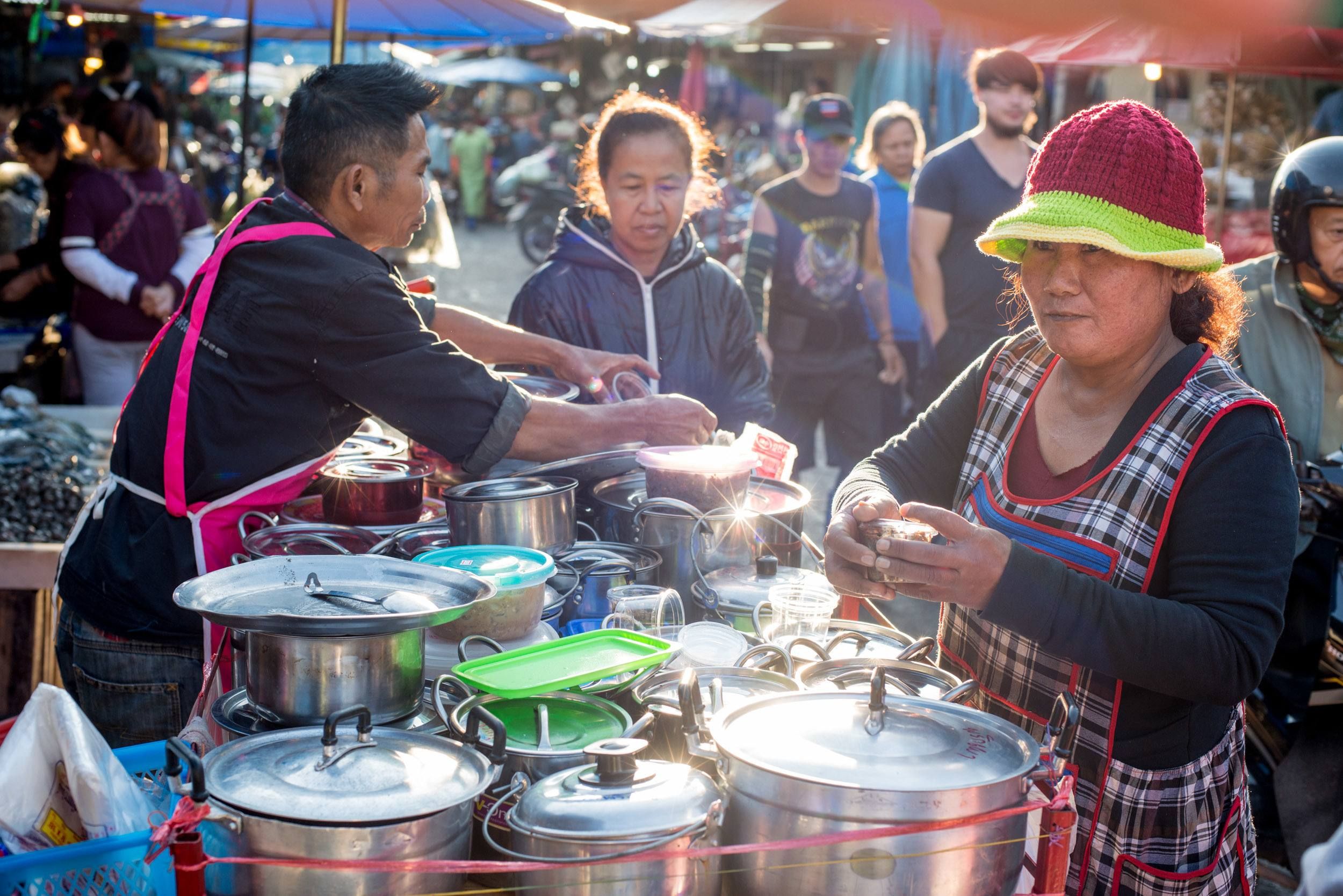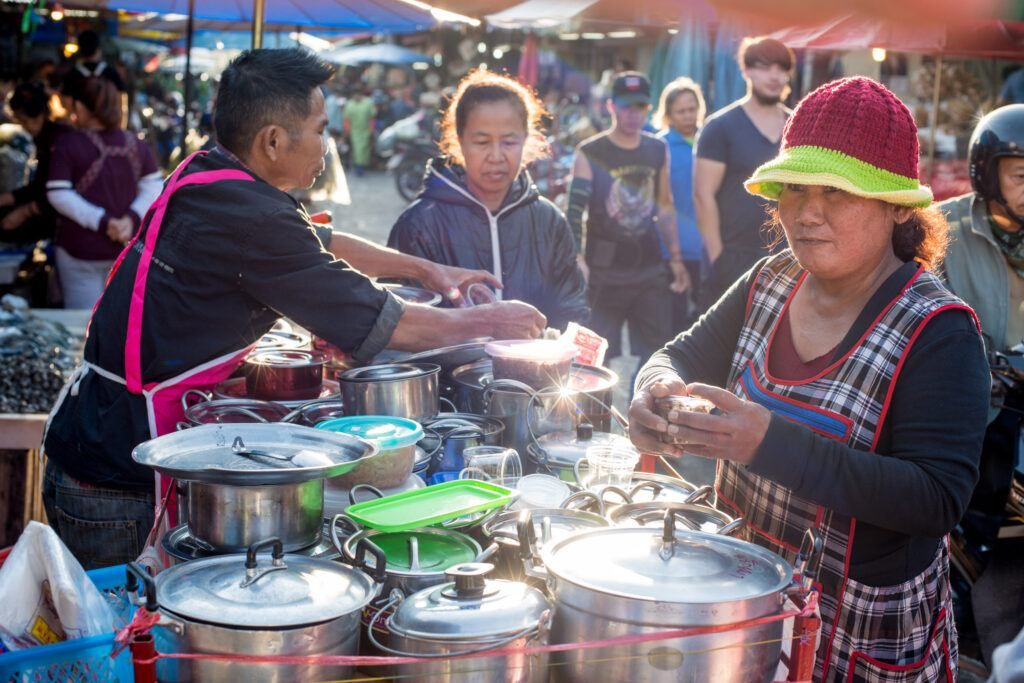I love photographing busy outdoor markets. Lots of photographers do. There’s always plenty of action and light, so coming home with plenty of good images is normal. The real challenge is to avoid the easy, often clichéd photographs.
In this guide, I’ll walk you through a market with me. You’ll learn how I approach capturing the essence of the place, produce, and people and how you can make a series of unique images at any market you visit.
Recommended Reading: Want to expand your shooting skills and master photography? Grab our set of 65 beautifully designed and printable Action Cards that will give you over 200 photography assignments to help you take your photography to the next level. Check it out here.
Tip #1: Leave Your Camera in Your Bag
When you arrive at the market, leave your camera in the bag for a while. Don’t immediately start snapping pictures. Observe the place and what people are doing there.
Watch the vendors and shoppers. How are they interacting? What’s the general pace of activity? Does this change from place to place in the market?
Look for pockets of heightened activity. These might be at a particular store or a busy intersection. Maybe a mobile vendor is selling some cheap products from a cart that everybody wants. Think about what the locals are finding most interesting.
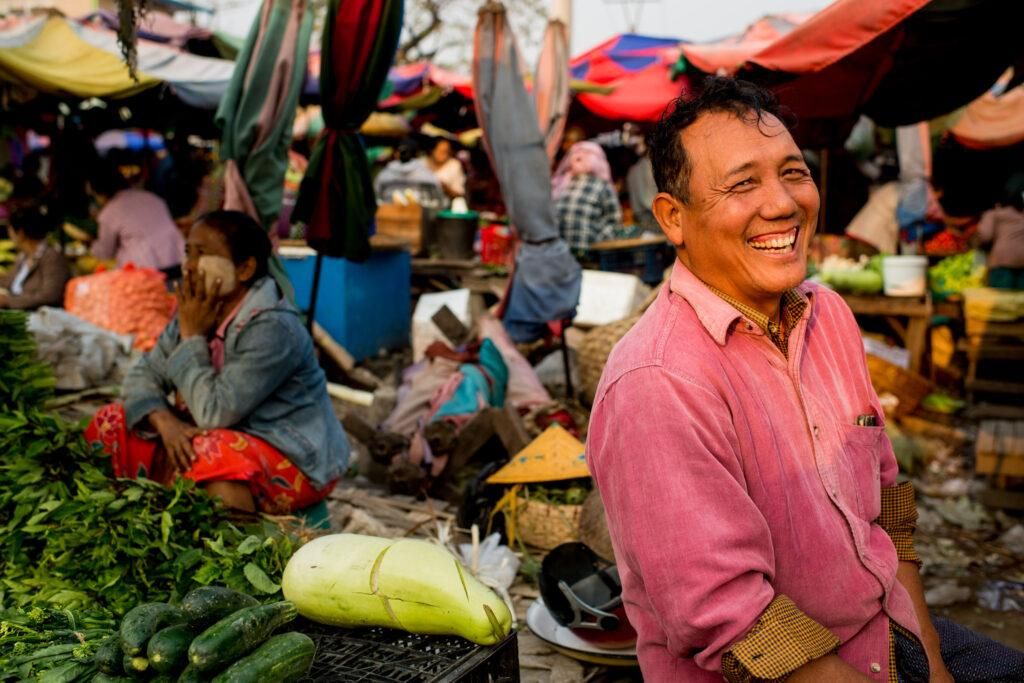
Photograph by Kevin Landwer-Johan
Think about lighting. There will certainly be areas in the market with more attractive light than other places. Look to see how you can make the most of this light. Where can you stand, sit or squat to use the light to your best advantage?
Discover what makes this market unique. All of them are. Try to find the defining points that are special to that place. It might be a clock tower or a water fountain. It may be a set of train tracks running right through the center. If that’s the case, find out when the next train will be passing. Don’t be distracted or you might miss it.
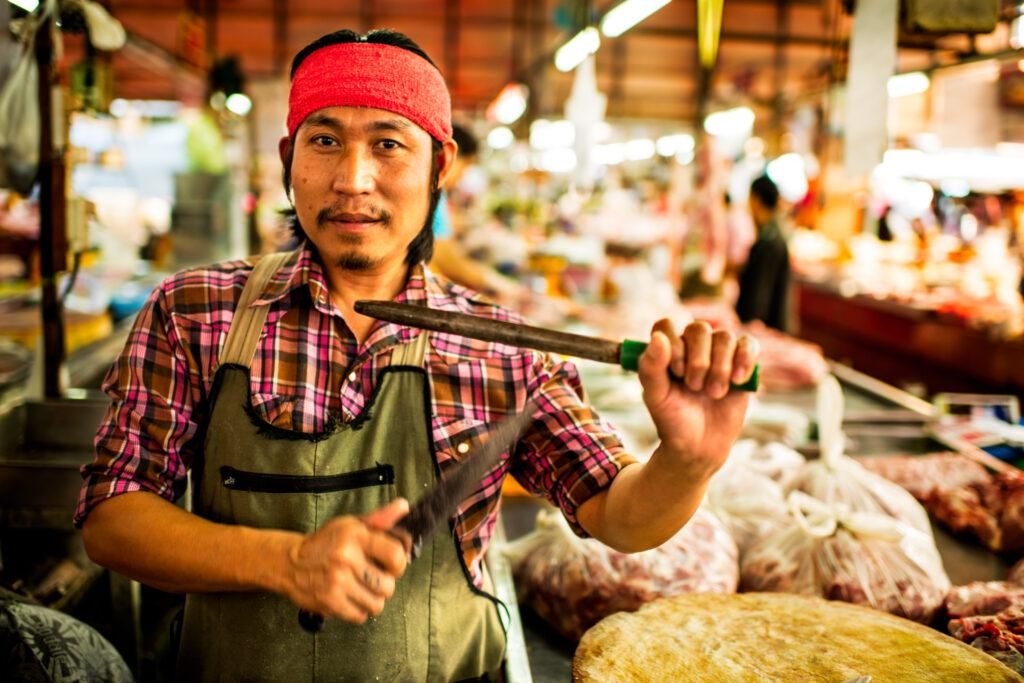
Photograph by Kevin Landwer-Johan
Even if you don’t speak the local language, interact a little with people. You never know what you might be able to learn. Let them see your camera and they may show you some hidden nook or cranny to photograph that you’d never discover on your own.
Who are the most interesting, photogenic vendors at the market? Find people you think will enjoy being photographed. There are always some at every market. Watch for those who engage with shoppers and are outgoing. These will often be the ones who you’ll be able to make the best street portraits of.
Even if you don’t speak the local language, interact a little with people. You never know what you might be able to learn.
Finding repetition will help you capture some of the best action photos. It might be a team of people unloading a cart or truck. Maybe a certain way people come to buy a product. A fishmonger cleaning fish. Many repetitive tasks are occurring, you just have to look for them.
Key Lesson: Be observant even before you get to the market. Find out what time of the day, or night, the market is most lively. It may be well before sunrise as trucks come to unload produce. A quick internet search will likely provide an answer.
Tip#2: Think Like a Movie Director. Wide, Medium, Close-up
Aim for three types of compositions. Wide, medium, and close up. Including these in the series of photos, you take at a busy outdoor market will present your whole experience. Anyone who has not been there will have a clear view of what the market is like.
Key Lesson: Imagine you’ve been assigned to cover the market for a magazine story. You want to show your editor, who’s never been there, as much about the market as you can. Wide compositions alone will not do this. Nor will predominantly close-up or medium compositions.
Look for an establishing image. One that gives a broad overview of the market environment. This may be one of the first photos you take as you arrive. Or you may not find the scene until you are part way through. This is a key, foundational photo for your magazine spread. It can also be one of the most challenging to capture.
If you can find a place to get above the general activity, this can often provide an ideal wide view of a market. Often, it’s not possible, so you have to make do with trying to capture a broad perspective from ground level. I’ve been photographing the main fresh market in Chiang Mai, Thailand, for many years and still don’t consider I have a single wide image that characterizes the market well. I am very fussy though.
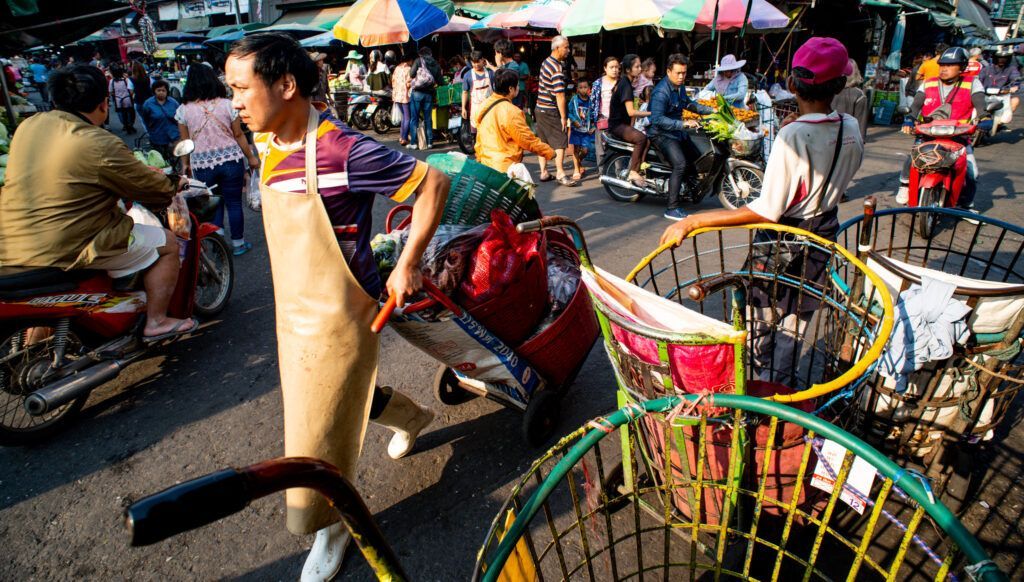
Photograph by Kevin Landwer-Johan
Medium compositions will show more of the general pace of life and activity. Showing some of the environment but focused more on one aspect of it. People preparing fruit and vegetables. A vendor cleaning down their table at the end of sales. Transactions taking place. These photos are often action photos.
Look for interesting things happening that would be a regular part of daily life at the market. Take your time. Be observant and you will find them.
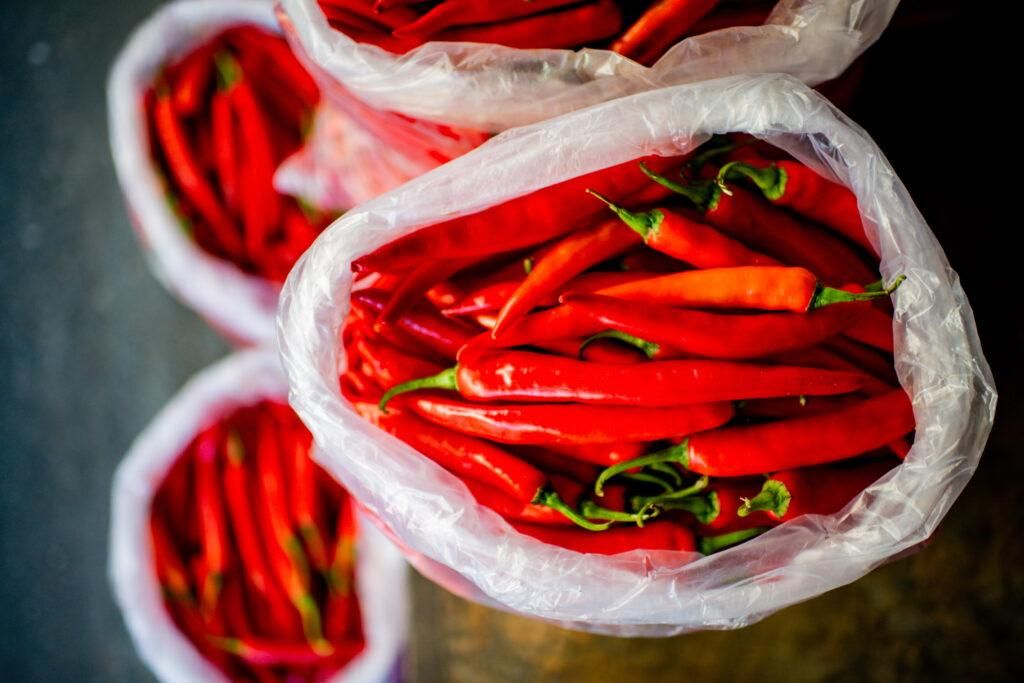
Photograph by Kevin Landwer-Johan
Close-up photos can be of anything that catches your eye. Look for detail in everything that is typical but that others may overlook. Think about color, line, and shape. Find interesting things and get in close to them.
You don’t need a macro lens to get close. Often a wide lens will allow you to get in very close and still be able to focus. Frame your subject so you can’t see anything else. Chili peppers are a favorite to get closeups of. The shape and strong color make them very attractive. Hands doing things also make fascinating subjects for close-up compositions.
Tip #3: Photograph What’s Attractive to You
Add your style. Concentrate on photographing what you find most attractive, or unattractive, at the market. This will mean you create a series of unique images.
Avoid the cliché images and what you think others may photograph. You don’t want to end up with the same set of photos most people would take at your market.
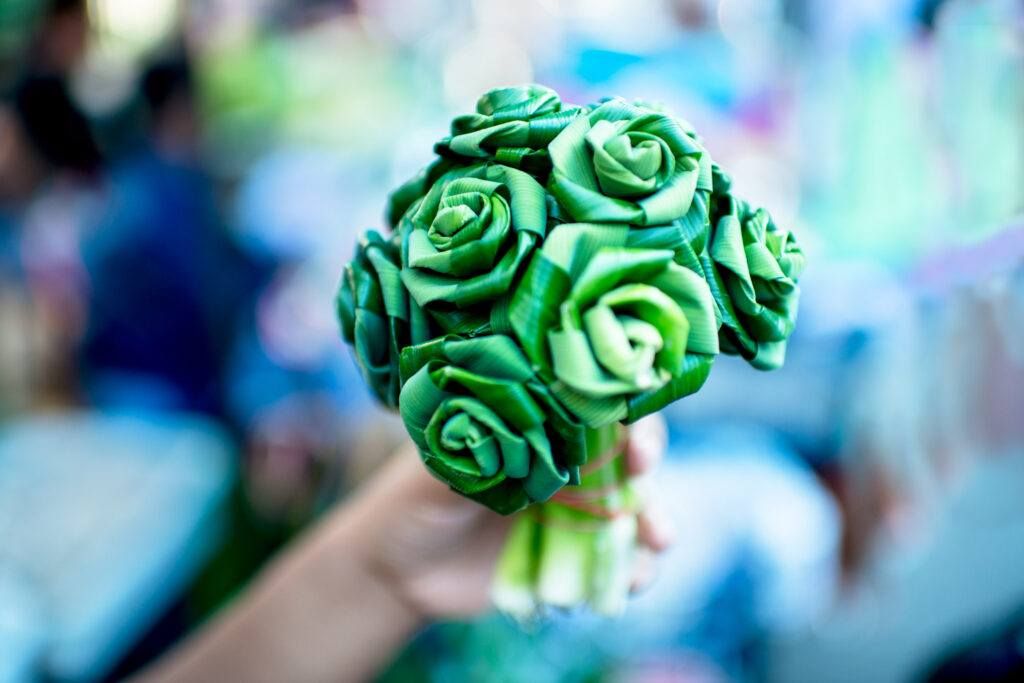
Photograph by Kevin Landwer-Johan
There will be subjects that stand out and need to be photographed. Think of these creatively. Don’t only take the first angle you think of. Move around. Consider the lighting and what’s in the background. How can you make an interesting subject into an interesting photograph? The subject alone does not mean your photo is necessarily good. You must frame it well, expose it creatively, and capture it at that precise moment.
Spend time on a subject that attracts you. Cover it from different angles. Even from different times of the day, if you can. Look to photograph it at its best. Avoid snapshots of interesting things. They will never appear so interesting unless you make the most of them.
Key Lesson: Concentrating on what you find attractive should be easy. Don’t worry that other people may not think so. Focus on presenting that which you find engaging, and others will be drawn to what you see. It’s all about how you present what you see. What should you include, and what should you leave out of your compositions? How do you expose and time your photos will make them interesting for someone who may have no interest in what you’ve decided to photograph?
Tip #4: It’s Mostly About the People
Busy outdoor markets are all about people. When there are no people at the market, there’s not so much to photograph. The character of the location is not nearly so strong.
Think of ways to include the people in your photographs that show how integral they are to the market. It’s all about commerce and transactions, so look to capture these happening.
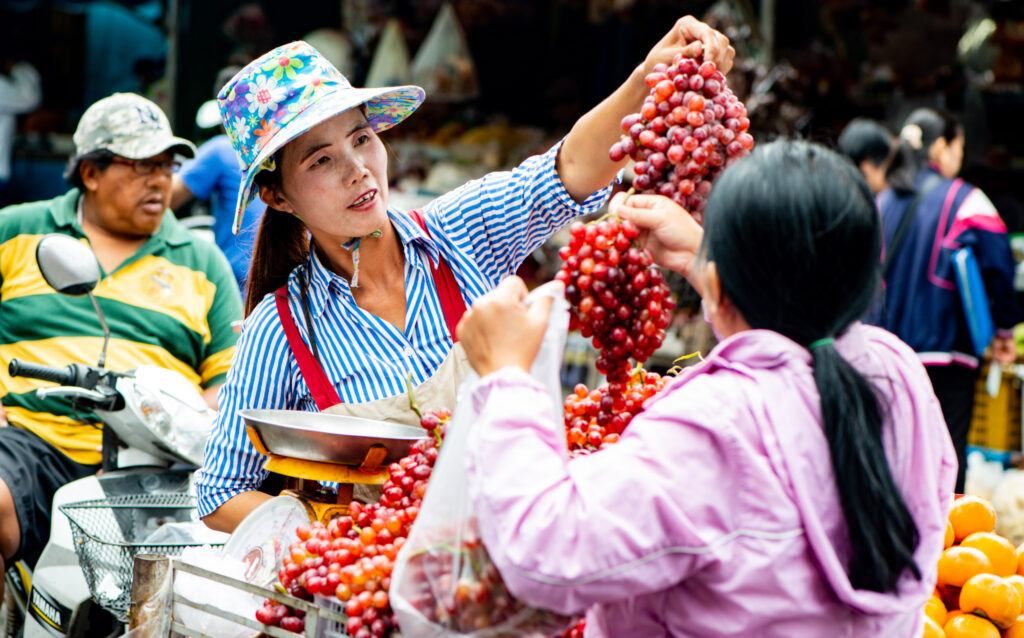
Photograph by Kevin Landwer-Johan
Local fresh markets are places people come to buy the food that sustains their lives. They are the heartbeat of a town. Often, they are old and full of history. Visiting a local rural market when we first moved to our new home, I asked a vendor how old the market was. He chuckled and said it was older than he was. Then told us it was over 100 years old, but that he was not. Look for people that are part of the market.
Busy outdoor markets are all about people. When there are no people at the market, there’s not so much to photograph.
Some have probably been coming there every week or every day since the market’s inception, or at least for a long time. Look at how these vendors present what they have to sell. See how they interact with people who buy their products regularly. This is where you’ll find the real life and soul of a market.
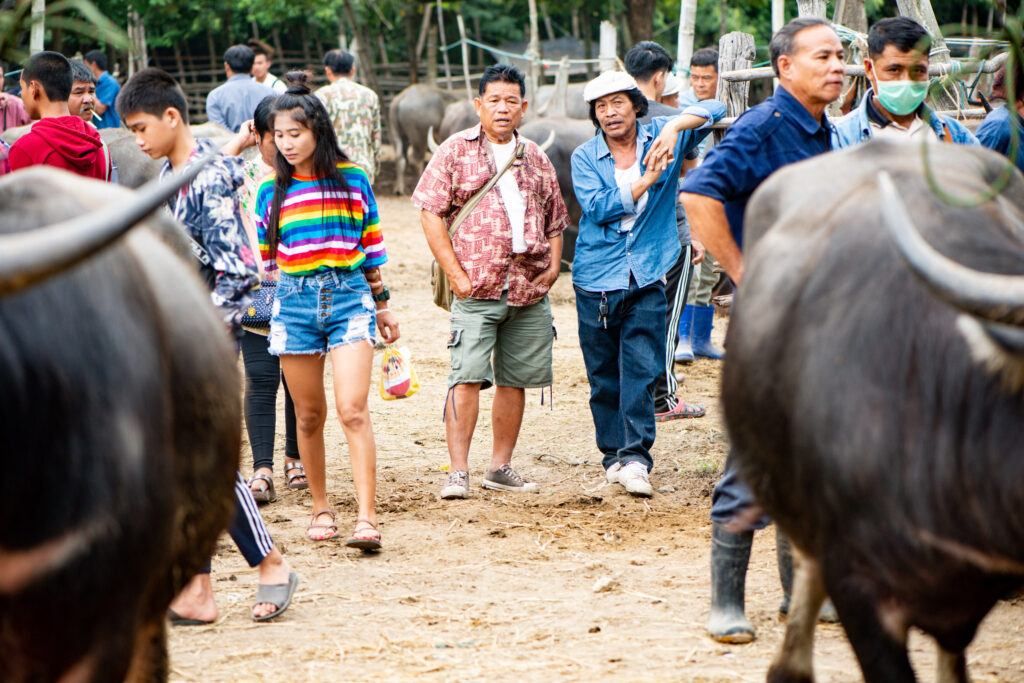
Photograph by Kevin Landwer-Johan
Photograph the relationships people have with each other. It may be a husband-and-wife shopping together. Possibly a tourist enquiring about something they’re not sure of what it is. Two vendors sharing a joke. Capturing the connections will add life to your photo story. Magazine editors tend to like images like that.
Tip #5: Think About Your Gear
Don’t carry too much with you. Packing a bag full of gear can restrict you. It will become too heavy very quickly. It will also inhibit your movement in condoned and busy spaces.
I am happy photographing a market with one full-frame camera and a 35mm prime lens. With these tools, I can capture wide, medium, and close-up photos for a good series of photographs of a busy outdoor market.
Some people prefer to work with a zoom and that’s a good option of course. But take only one. Even leave your camera bag behind if you can. Taking every piece of gear you think you may need because you fear missing the best photos, maybe the thing that causes you to miss those photos.
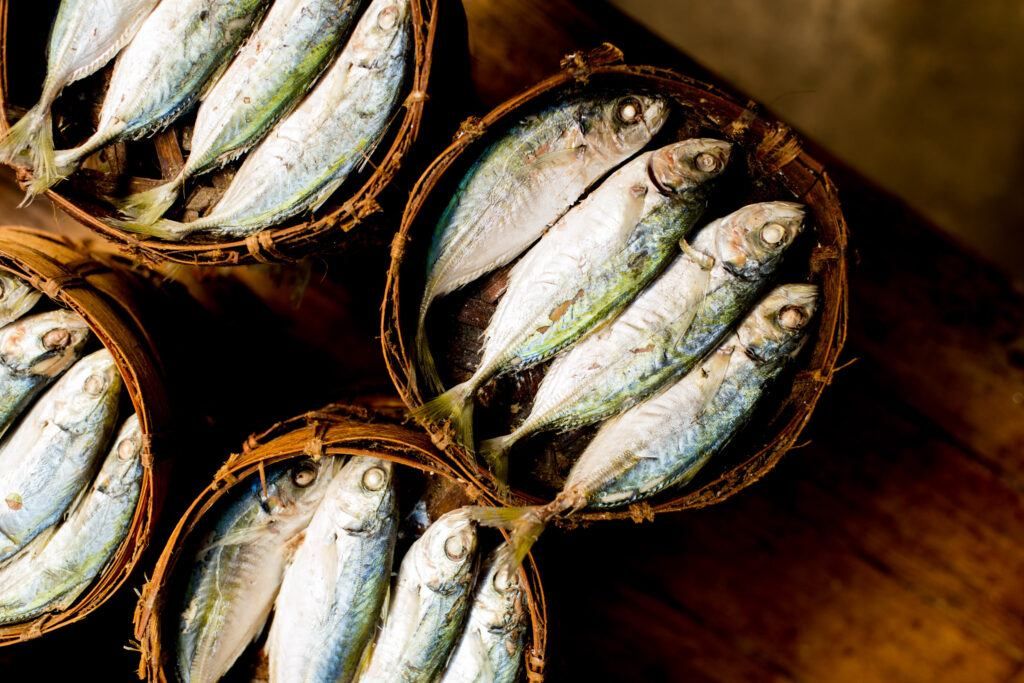
Photograph by Kevin Landwer-Johan
Carrying a bag through a busy market you’ll find yourself knocking into things. It may even restrict your movement if the place is tightly packed. Besides, you may find you aren’t comfortable opening your bag and changing lenses because of how busy the market is.
Pushing yourself to be creative with one camera body and one lens is a healthy exercise. When you have less gear to concentrate on you have to be more creative. You have more headspace to think outside the box and still capture the photos you want.
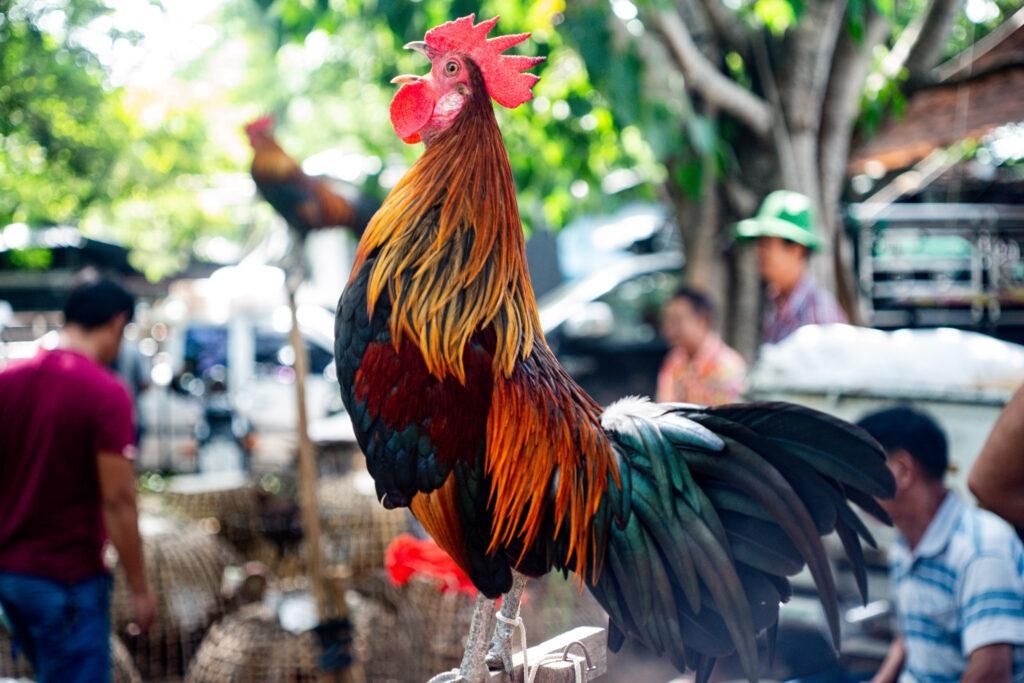
Photograph by Kevin Landwer-Johan
Key Lesson: A wide to medium zoom is all you are likely to need to cover a busy outdoor market well. Carrying less gear makes it easier to move and you can most often get close enough to what you want to photograph.
Recommended Reading: Want to expand your shooting skills and master photography? Grab our set of 65 beautifully designed and printable Action Cards that will give you over 200 photography assignments to help you take your photography to the next level. Check it out here.
Conclusion
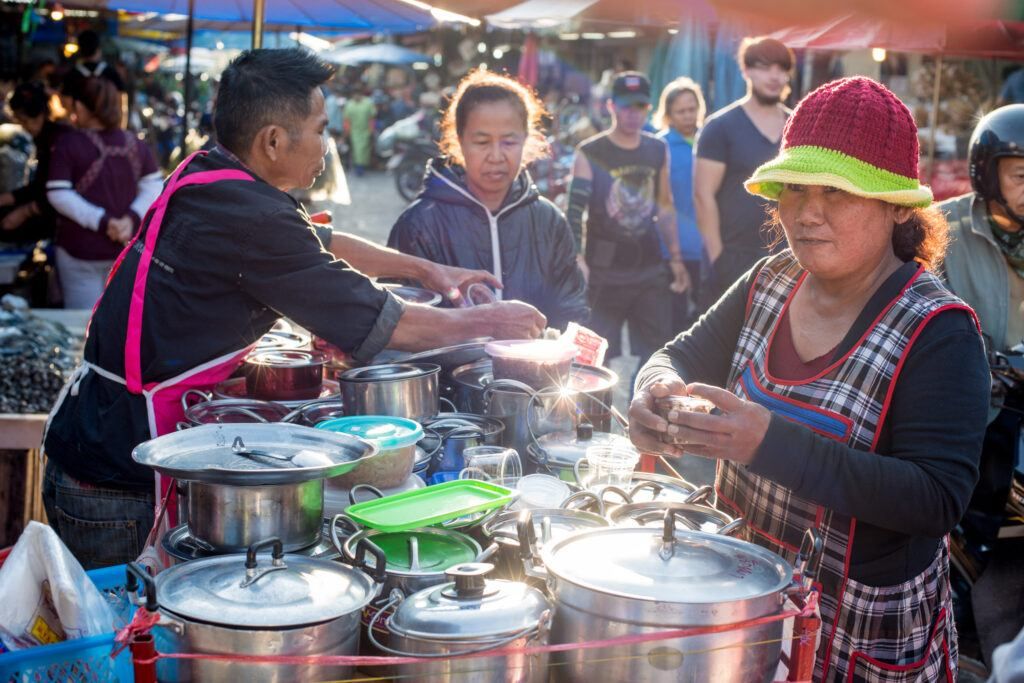
Photograph by Kevin Landwer-Johan
Photographing busy outdoor markets is a lot of fun. They are a very popular subject because there’s so much interesting activity going on. This also means they are often very well photographed. The challenge is being able to capture unique images that convey the character of the place and the people who inhabit it.
Take your time. Look for what you find attractive. Then get in to take a series of wide, medium, and close-up photographs that would make any magazine editor smile.
Self-Check Quiz:
- Why is it a good idea to leave your camera bag at home when you visit a busy outdoor market?
- How can you find out when the best time to visit a particular market is?
- What are three main types of composition to include in your photo series of a market?
- What kinds of things should you concentrate on photographing, so your images are unique?
- What makes the character of any market stronger?
- Which is better for market photography – a wide to medium zoom or a longer focal length zoom?


